India customers to view on amazon.in
Create the Perfect Cat-Friendly Living Space
Transforming your home into a haven for your feline friend is crucial for their comfort and safety. Understanding your cat’s natural behaviors and needs is the first step in cat-friendly home decor. By incorporating elements that cater to their instincts, you can kitty-proof your interior design and ensure a harmonious coexistence.
- Understanding Your Cat’s Natural Behaviors
- Territory and Vertical Space Needs
- Scratching, Hunting, and Play Instincts
- Privacy and Security Requirements
- Safety First: Cat-Proofing Your Home
- Identifying and Removing Toxic Plants and Substances
- Securing Cords, Blinds, and Small Objects
- Window and Balcony Safety Solutions
- Essential Elements to Create the Perfect Cat-Friendly Living Space
- Vertical Territory: Shelves, Trees, and Perches
- Hiding Spots and Cozy Retreats
- Scratching Posts and Surfaces
- Living Room Transformations for Feline Friends
- Creating a Cat-Friendly Bedroom
- Bed Access and Sleeping Arrangements
- Nighttime Enrichment for Nocturnal Cats
- Closet and Under-Bed Space Utilization
- Kitchen and Dining Areas: Safe Cat Zones
- Counter-Surfing Prevention Strategies
- Setting Up the Perfect Feeding Station
- Food Storage and Safety Considerations
- Bathroom and Utility Spaces for Cats
- Window Wonderland: Creating Indoor Entertainment
- Cat-Friendly Materials and Furniture Selection
- Scratch-Resistant Upholstery Choices
- Flooring Options for Traction and Cleanup
- Furniture That Serves Both Humans and Cats
- Small Space Solutions for Urban Cat Parents
- Vertical Space Maximization in Apartments
- Multi-Functional Cat Furniture
- Creative Storage for Cat Supplies
- Multi-Cat Household Design Strategies
- Resource Distribution to Prevent Conflict
- Creating Multiple Territories and Pathways
- Introducing New Cats to the Environment
- Conclusion
- FAQ
- What are the essential elements to create a cat-friendly living space?
- How can I cat-proof my home to ensure my cat’s safety?
- What are some ways to create a window wonderland for my cat?
- How can I make my living room more feline-friendly?
- What are some strategies for designing a multi-cat household?
- How can I maximize vertical space in a small apartment for my cat?
- What type of flooring is best for cats?
- How can I create a safe and comfortable space for my cat in the kitchen and dining areas?
- What are some considerations for litter box placement?
- How can I make my bedroom more cat-friendly?
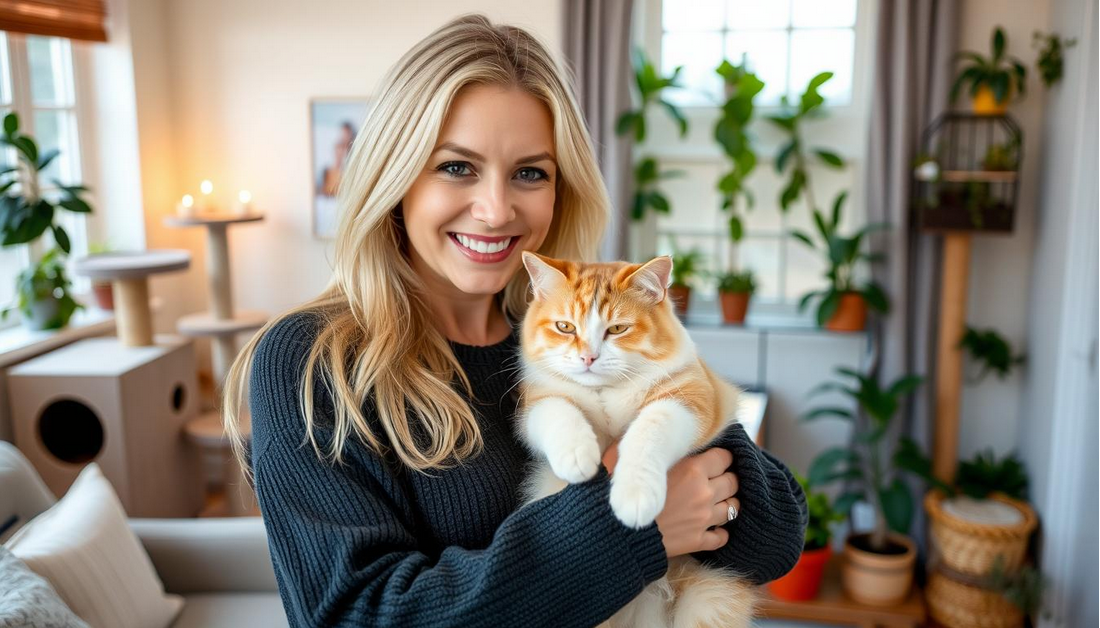
To achieve this, it’s essential to consider your cat’s perspective and make adjustments accordingly. This involves securing loose items, protecting electrical cords, and providing ample spaces for rest and play. By doing so, you’ll be well on your way to designing a safe and enjoyable space for your cat.
Key Takeaways
- Understand your cat’s natural behaviors and needs.
- Secure loose items and protect electrical cords.
- Provide ample spaces for rest and play.
- Incorporate cat-friendly elements into your decor.
- Ensure a safe and enjoyable environment for your cat.
Understanding Your Cat’s Natural Behaviors
To create a cat-friendly home, it’s essential to comprehend your cat’s instinctual behaviors. Cats have specific needs that are driven by their natural instincts, including territory and vertical space needs, scratching and hunting instincts, and requirements for privacy and security.
Territory and Vertical Space Needs
Cats require territory to claim as their own, which includes vertical space to climb and observe their surroundings. Providing cat trees or shelves can help satisfy this instinct, giving your cat a sense of security and control over their environment.
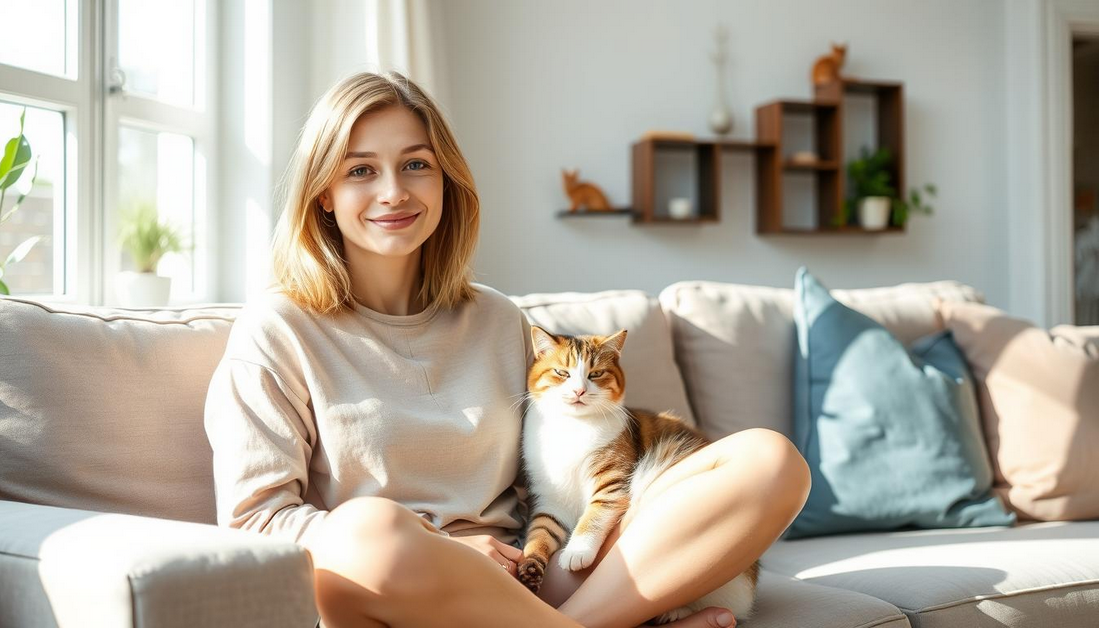
Scratching, Hunting, and Play Instincts
Cats have a natural instinct to scratch, hunt, and play. Incorporating scratching posts and engaging toys can redirect these behaviors away from furniture and other undesirable targets, promoting a more harmonious living space.
Privacy and Security Requirements
Cats need places to hide and feel secure, such as cozy retreats or hiding spots. Ensuring your cat has access to these areas is vital for their emotional well-being and can help reduce stress.
By understanding and catering to these natural behaviors, you can create a more enjoyable and stress-free environment for your cat, enhancing the overall quality of life for both you and your pet.
Safety First: Cat-Proofing Your Home
To keep your cat safe, it’s crucial to identify and mitigate potential hazards around the house. Cat-proofing is an essential step in creating a secure and welcoming environment for your feline friend.
Identifying and Removing Toxic Plants and Substances
Many common household plants are toxic to cats. Remove or relocate plants like lilies, snake plants, and tulips to out-of-reach areas. Also, be aware of other toxic substances such as cleaning supplies, medications, and certain foods that can harm your cat if ingested.
Securing Cords, Blinds, and Small Objects
Cats often enjoy playing with or chewing on cords and small objects, which can lead to electrical shock or choking hazards. Secure cords with cord protectors or conceal them, and keep small objects like coins, batteries, and marbles out of reach.
Window and Balcony Safety Solutions
Cats are naturally drawn to windows and balconies, but these areas can be hazardous. Install window guards or stops to limit window opening, and consider balcony enclosures or nets to prevent falls.
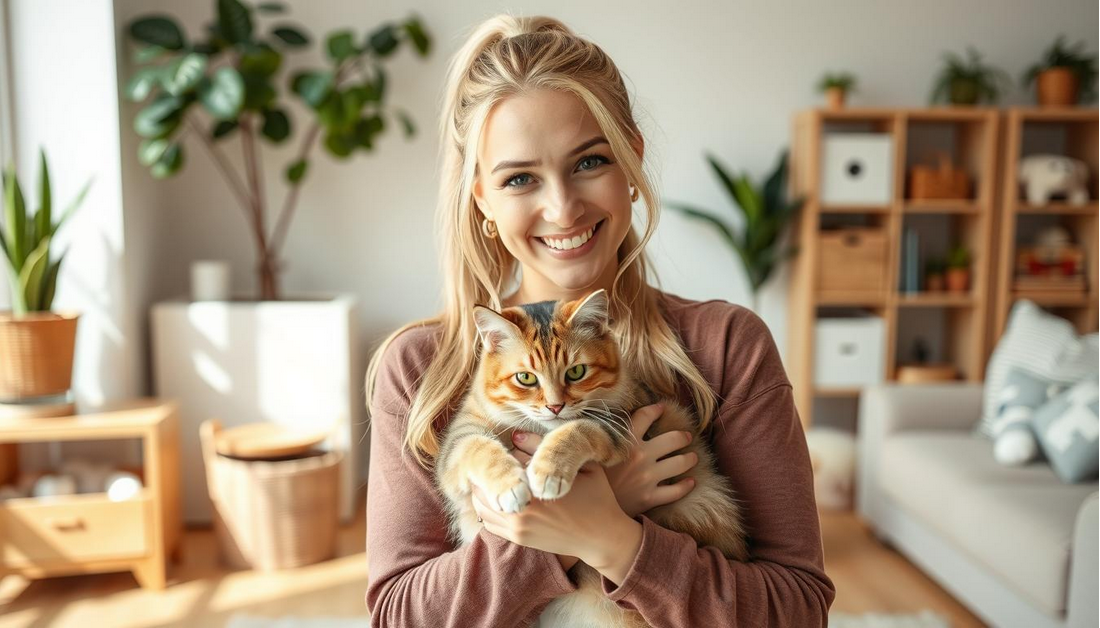
By addressing these potential hazards, you can significantly reduce the risk of accidents and create a safer, more enjoyable living space for your cat.
Essential Elements to Create the Perfect Cat-Friendly Living Space
To create a truly cat-friendly home, you must consider the elements that make your cat feel secure, stimulated, and happy. A well-designed cat-friendly living space can significantly enhance your cat’s quality of life.
Vertical Territory: Shelves, Trees, and Perches
Providing vertical territory is crucial for cats, as it allows them to climb, observe, and rest. Incorporating shelves, cat trees, and perches into your home can help to create a stimulating environment. These vertical spaces give cats a sense of security and allow them to exercise their natural climbing instinct.
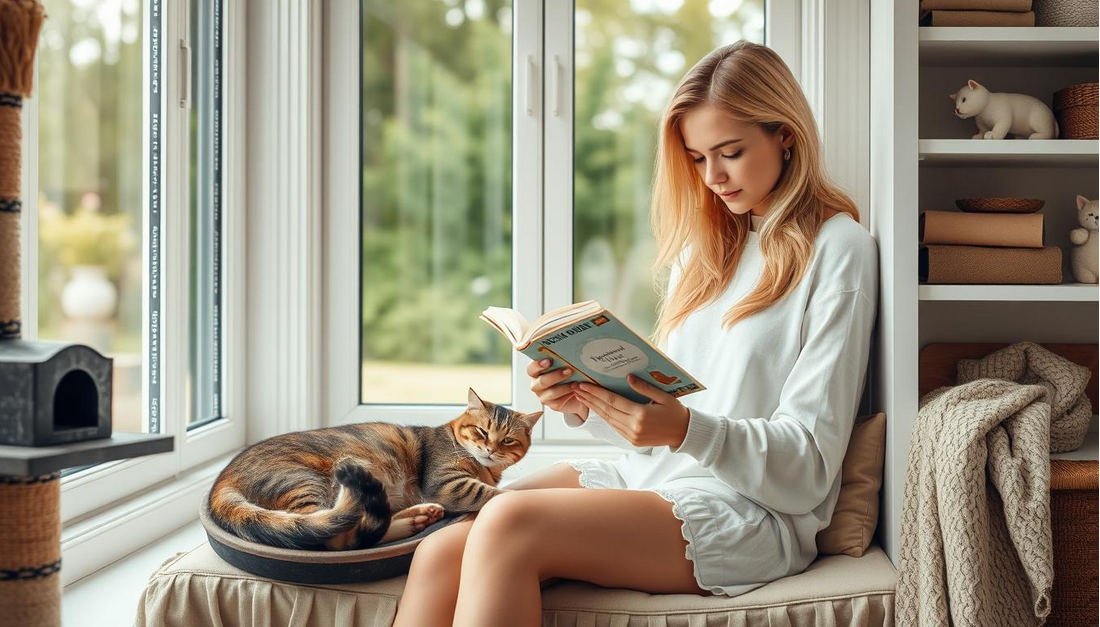
Hiding Spots and Cozy Retreats
Cats often feel the need to hide or retreat to a quiet, safe space. Providing hiding spots and cozy retreats, such as cardboard boxes or cat tents, can help to reduce your cat’s stress levels. These hiding spots can be placed in quiet areas of the home, allowing your cat to rest and feel secure.
Scratching Posts and Surfaces
Scratching posts and surfaces are essential for maintaining your cat’s nail health and allowing them to stretch. Scratching also helps to remove the dead outer layer of your cat’s nails, keeping them healthy. By providing a variety of scratching surfaces, you can help to save your furniture and keep your cat happy and healthy.
By incorporating these essential elements into your home, you can create a cat-friendly living space that meets your cat’s physical and emotional needs.
Living Room Transformations for Feline Friends
A cat-friendly living room is not just about aesthetics; it’s about creating a safe and welcoming environment for your feline friend. This involves making a few thoughtful adjustments to your space.
Furniture Arrangement for Cat Pathways
Rearranging your furniture to create pathways for your cat can significantly enhance their ability to navigate the room. Consider creating a cat route by placing furniture in a way that allows your cat to move freely.
Cat-Friendly Seating Options
Choosing the right seating is crucial. Opt for scratch-resistant sofas or consider adding cat beds that are both comfortable for your cat and stylish for your living room.
Entertainment Center Safety
Securing your entertainment center is vital to prevent accidents. Ensure that cords are safely tucked away and that heavy equipment is stabilized to prevent it from tipping over.
By implementing these changes, you can create a living room that is both enjoyable for you and safe for your cat. It’s all about striking the right balance between style and functionality.
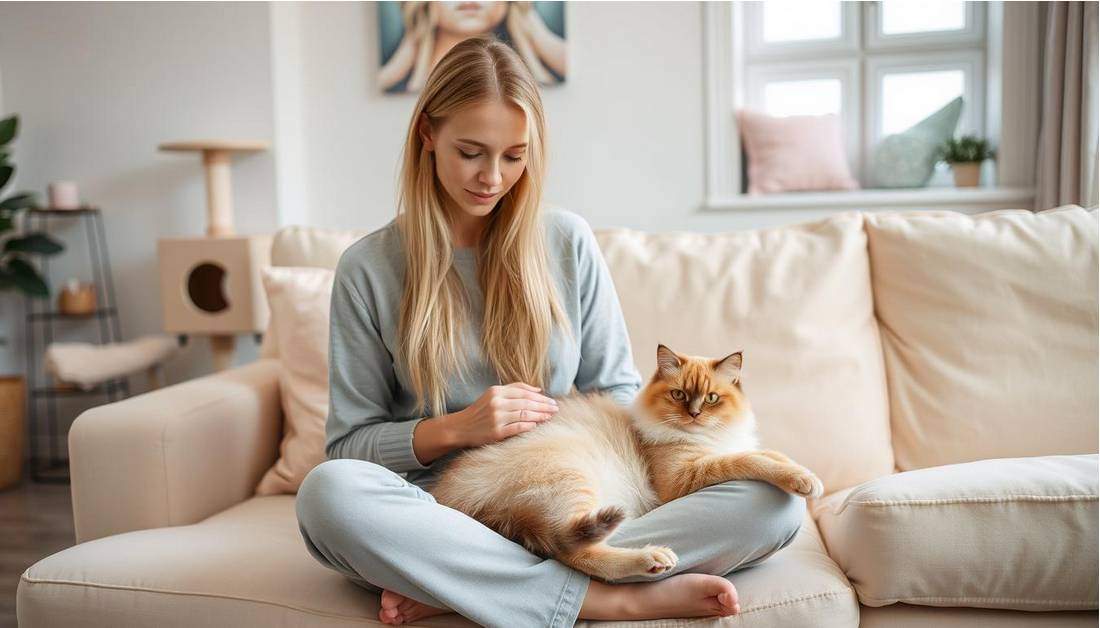
Creating a Cat-Friendly Bedroom
Creating a serene and inviting bedroom for both you and your cat requires some thoughtful planning. A cat-friendly bedroom is essential for your pet’s comfort and happiness.
Bed Access and Sleeping Arrangements
Ensuring your cat has easy access to the bed is crucial. Consider using a cat ladder or steps to help your cat climb onto the bed comfortably. Providing a comfortable sleeping arrangement for your cat, such as a plush cat bed or a soft blanket, can also enhance their sleeping experience.
Nighttime Enrichment for Nocturnal Cats
Cats are naturally nocturnal, so providing nighttime enrichment activities can keep them engaged and stimulated. Puzzle toys filled with treats or interactive playthings can be particularly effective in keeping your cat entertained during the night.

Closet and Under-Bed Space Utilization
Utilizing closet and under-bed spaces can provide your cat with cozy hiding spots and reduce clutter in your bedroom. Consider using under-bed storage containers or cat beds designed to fit under the bed. Closet organizers can also help create a cat-friendly area within your closet.
| Feature | Benefit | Implementation |
|---|---|---|
| Cat Ladder/Steps | EASY BED ACCESS | Place near the bed |
| Puzzle Toys | NIGHTTIME ENRICHMENT | Use during evening hours |
| Under-Bed Storage | COZY HIDING SPOTS | Install under-bed containers |
Kitchen and Dining Areas: Safe Cat Zones
Transforming your kitchen and dining areas into safe zones for your cat requires careful planning and attention to detail. The kitchen can be a hazardous area for cats due to the presence of toxic substances, sharp objects, and hot surfaces.
To create a safe environment, it’s essential to address several key areas. Counter-surfing prevention is crucial to prevent your cat from accessing countertops where food and other hazardous items may be present.
Counter-Surfing Prevention Strategies
Remove tempting items from countertops, and consider using deterrents such as double-sided tape or a spray deterrent to discourage jumping.
Setting Up the Perfect Feeding Station
Create a dedicated feeding station for your cat, keeping it clean and organized. This will help reduce mealtime stress and prevent accidents.
Food Storage and Safety Considerations
Ensure that food storage is secure and out of reach to prevent accidental ingestion of human food or other hazardous substances.
| Safety Measure | Description | Benefit |
|---|---|---|
| Counter-surfing prevention | Remove tempting items and use deterrents | Prevents access to hazardous items |
| Dedicated feeding station | Create a clean and organized feeding area | Reduces mealtime stress and accidents |
| Secure food storage | Store food and hazardous substances out of reach | Prevents accidental ingestion |
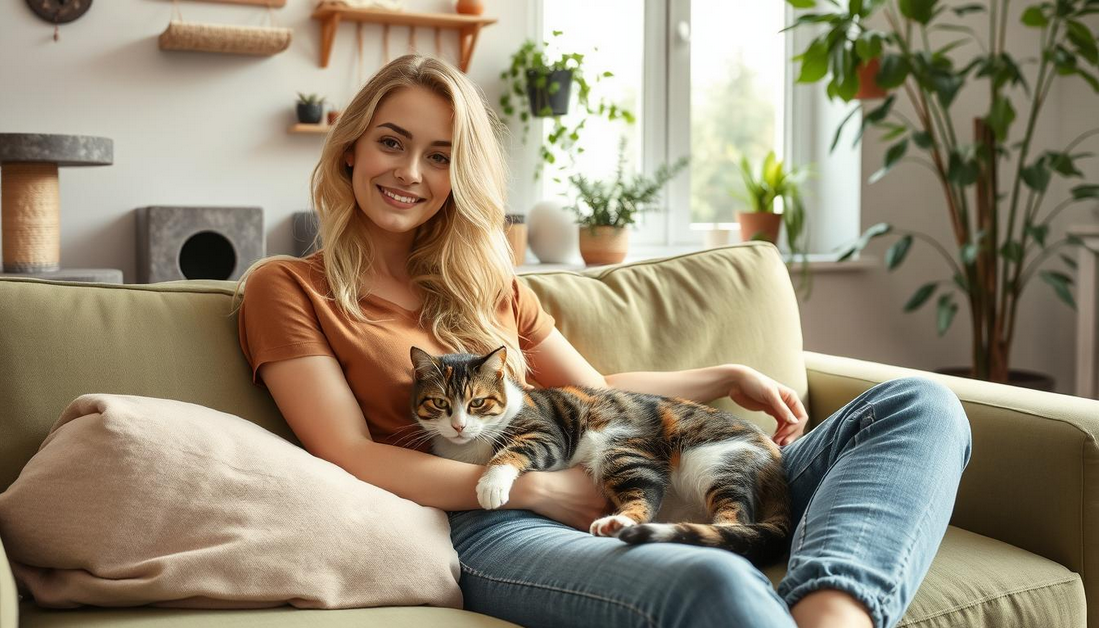
Bathroom and Utility Spaces for Cats
When designing a cat-friendly home, it’s essential to consider often-overlooked areas like the bathroom and utility spaces. These areas can significantly impact your cat’s comfort and safety. By making a few thoughtful adjustments, you can create a more welcoming environment for your feline friend.
Litter Box Placement and Privacy
Proper litter box placement is crucial for your cat’s privacy and stress reduction. Place the litter box in a quiet, low-traffic area to encourage good litter box behavior. Avoid locations near their food and water bowls, as cats often prefer to keep these areas separate.

Good ventilation is vital for minimizing odors and keeping the litter box area comfortable. Consider using a litter box with built-in odor control or placing an air purifier nearby to maintain fresh air.
Accessibility Considerations
Ensure that the litter box is easily accessible, especially for older or disabled cats. Choose a litter box with low sides or consider a ramp to facilitate easy entry and exit.
Laundry Room Safety Measures
The laundry room can pose several hazards to cats, including toxic substances and electrical cords. To ensure laundry room safety, store hazardous materials out of reach, and keep the door closed to prevent your cat from accessing dirty laundry or getting trapped.
- Secure laundry detergent and other chemicals in high cabinets.
- Keep the washing machine and dryer doors closed when not in use.
- Prevent your cat from hiding in laundry baskets or among dirty clothes.
Window Wonderland: Creating Indoor Entertainment
Transforming your windows into a wonderland can be a game-changer for your cat’s indoor entertainment. By creating an engaging and safe environment, you can provide your feline friend with endless stimulation and enjoyment.
Window Perches and Shelving Options
Installing window perches and shelving options is an excellent way to allow your cat to observe the outdoors from a safe distance. These perches provide a comfortable spot for your cat to lounge and watch birds, squirrels, and other wildlife.
- Choose sturdy and well-designed perches that can support your cat’s weight.
- Consider adding cushions or soft bedding for extra comfort.
- Place perches at varying heights to give your cat options.

Bird Feeders and Nature Viewing
Placing bird feeders outside your windows can attract a variety of birds and other wildlife, providing your cat with a natural spectacle to watch. This can be a great source of entertainment and stimulation.
“The simple act of watching birds can be a significant source of joy and relaxation for cats.”
Window Safety and Security
While creating a window wonderland, it’s crucial to ensure window safety and security. Installing window guards or nets can prevent falls and injuries. Make sure to:
- Use sturdy and reliable window guards.
- Regularly inspect the guards for any damage or wear.
- Keep windows locked when not in use to prevent accidental openings.
By following these tips, you can create a window wonderland that is both entertaining and safe for your cat.
Cat-Friendly Materials and Furniture Selection
When designing a cat-friendly living space, the choice of materials and furniture plays a crucial role. The right selections can enhance your cat’s comfort and safety while maintaining the aesthetic appeal of your home.
Scratch-Resistant Upholstery Choices
Choosing the right upholstery can significantly reduce damage caused by your cat’s scratching instinct. Scratch-resistant materials like microfiber, Crypton, or leather are excellent options. These materials are not only durable but also easy to clean and maintain. For instance, microfiber is known for its softness and resistance to scratches, making it an ideal choice for cat owners.
Flooring Options for Traction and Cleanup
The right flooring can improve your cat’s mobility and reduce mess. Hardwood or laminate flooring is preferable over carpet as it’s easier to clean and provides better traction for your cat’s paws. Additionally, consider using area rugs with non-slip backing to provide extra grip and comfort for your cat.
Furniture That Serves Both Humans and Cats
Selecting furniture that serves both humans and cats can enhance functionality and comfort. Multi-functional furniture like storage ottomans or cat beds with storage can keep your home organized while providing your cat with cozy retreats. Look for furniture with washable covers and sturdy construction to withstand your cat’s activities.
By making informed choices about materials and furniture, you can create a harmonious living space that meets both your needs and those of your cat.
Small Space Solutions for Urban Cat Parents
Creating a cat-friendly home in a small space requires creativity and strategic planning. Urban cat parents can maximize their cat’s living area by leveraging often-overlooked spaces and incorporating multi-functional elements.
One effective way to enhance your cat’s environment is by maximizing vertical space. This can be achieved through the use of wall-mounted shelves, cat trees, and perches, allowing your cat to climb, observe, and exercise.
Vertical Space Maximization in Apartments
Installing cat shelves or cat trees that reach up to the ceiling can significantly expand your cat’s territory without taking up valuable floor space. These vertical structures also provide cats with a sense of security and a vantage point to observe their surroundings.
Multi-Functional Cat Furniture
Investing in multi-functional cat furniture is another strategy for small space living. For example, cat beds that double as storage units or scratching posts that hide litter boxes can help maintain a clutter-free environment while catering to your cat’s needs.
Creative Storage for Cat Supplies
Finding innovative ways to store cat supplies is essential for maintaining a tidy and organized home. Utilizing under-bed storage, hanging organizers, or hidden compartments can keep cat toys, food, and other supplies out of sight yet easily accessible.
| Solution | Benefit |
|---|---|
| Vertical Space Maximization | Expands cat territory, provides exercise and observation areas |
| Multi-Functional Furniture | Enhances space efficiency, reduces clutter |
| Creative Storage | Maintains organization, improves accessibility |
Multi-Cat Household Design Strategies
Creating a harmonious home for multiple cats involves strategic planning and resource distribution. When you have multiple cats, it’s essential to consider their individual needs and behaviors to prevent conflict and stress.
A key aspect of designing a multi-cat household is ensuring that resources are distributed effectively. This includes providing multiple food and water stations, litter boxes, and scratching posts. By doing so, you can reduce competition and prevent conflict among your cats.
Resource Distribution to Prevent Conflict
Distributing resources is crucial in a multi-cat household. This means having multiple feeding areas, litter boxes, and scratching posts. The general rule of thumb is to have one litter box per cat, plus one extra. This helps reduce competition and stress.
For example, having multiple feeding areas can prevent dominant cats from guarding food sources. Similarly, providing multiple litter boxes can reduce the likelihood of accidents outside of the litter box.
Creating Multiple Territories and Pathways
Creating multiple territories and pathways is vital for reducing stress and providing cats with separate areas to retreat to. This can be achieved by using cat shelves, cat trees, and other vertical space.
By creating separate territories, you can help reduce conflict among your cats. For instance, providing a quiet area for a shy cat can help them feel more secure.
Introducing New Cats to the Environment
When introducing new cats to the environment, it’s essential to do so gradually and under controlled circumstances. Start by keeping the new cat in a separate room and allowing them to become familiar with the new environment.
Once the new cat appears comfortable, you can start introducing them to the other cats under close supervision. Rewarding calm behavior can help make the introduction process smoother.
Conclusion
Transforming your living space into a cat-friendly haven requires a thoughtful approach to home design. By understanding your cat’s natural behaviors and incorporating elements that cater to their needs, you can create a comfortable and safe environment for your feline companion.
A well-designed cat-friendly living space not only enhances your cat’s quality of life but also strengthens the bond between you and your pet. By applying the principles outlined in this article, you can create a feline-friendly oasis that meets your cat’s unique needs and preferences.
Whether you’re a seasoned cat owner or a newcomer to the world of cat parenthood, the key to creating a harmonious home is to prioritize your cat’s comfort, safety, and happiness. By doing so, you’ll be rewarded with a happy and healthy cat, and a more enjoyable living space for both you and your feline friend.
FAQ
What are the essential elements to create a cat-friendly living space?
The essential elements include providing vertical territory through shelves, trees, and perches, creating hiding spots and cozy retreats, and incorporating scratching posts and surfaces.
How can I cat-proof my home to ensure my cat’s safety?
Cat-proofing involves identifying and removing toxic plants and substances, securing cords, blinds, and small objects, and ensuring window and balcony safety by installing guards or nets.
What are some ways to create a window wonderland for my cat?
You can create a window wonderland by installing window perches and shelving options, placing bird feeders outside windows, and ensuring window safety and security.
How can I make my living room more feline-friendly?
You can make your living room more feline-friendly by rearranging furniture to create pathways for your cat, choosing cat-friendly seating options, and ensuring entertainment center safety.
What are some strategies for designing a multi-cat household?
Strategies for designing a multi-cat household include distributing resources to prevent conflict, creating multiple territories and pathways, and introducing new cats to the environment gradually.
How can I maximize vertical space in a small apartment for my cat?
You can maximize vertical space by using wall-mounted shelves and cat trees, and investing in multi-functional cat furniture.
What type of flooring is best for cats?
Flooring that provides traction and is easy to clean, such as hardwood or tile, is best for cats.
How can I create a safe and comfortable space for my cat in the kitchen and dining areas?
You can create a safe space by preventing counter-surfing, setting up a dedicated feeding station, and ensuring food storage is secure and out of reach.
What are some considerations for litter box placement?
Litter box placement should be in a private and quiet location, with good ventilation and odor control, and be easily accessible, especially for older or disabled cats.
How can I make my bedroom more cat-friendly?
You can make your bedroom more cat-friendly by ensuring your cat has easy access to the bed, providing comfortable sleeping arrangements, and utilizing closet and under-bed spaces for cat beds or storage.







